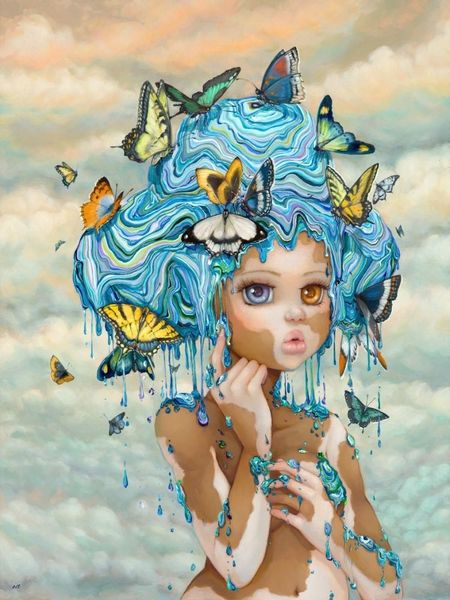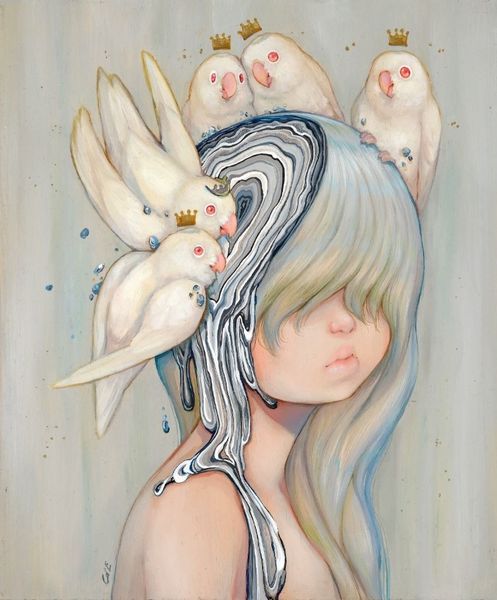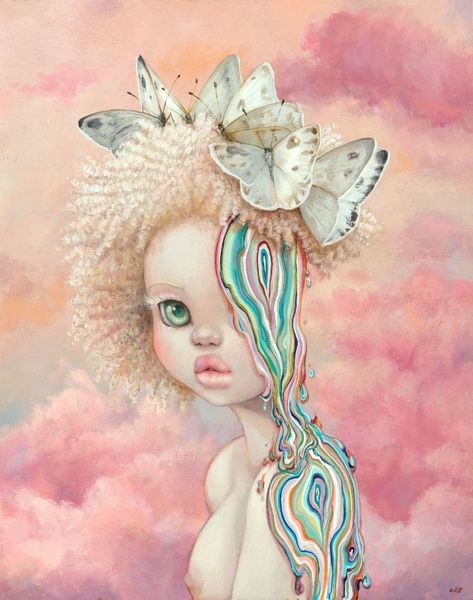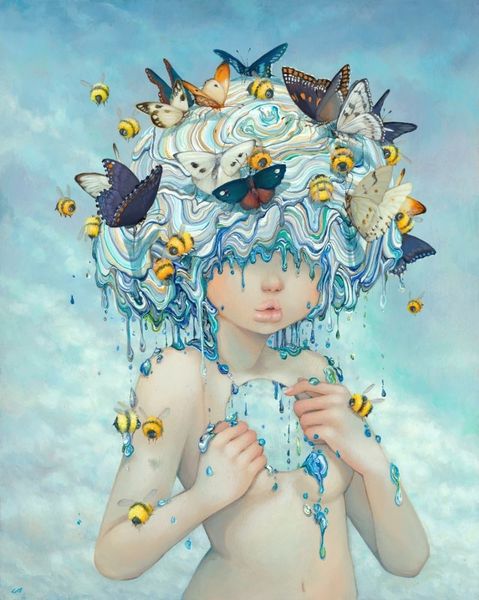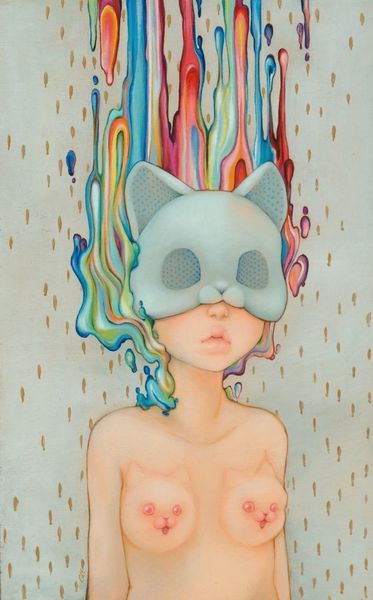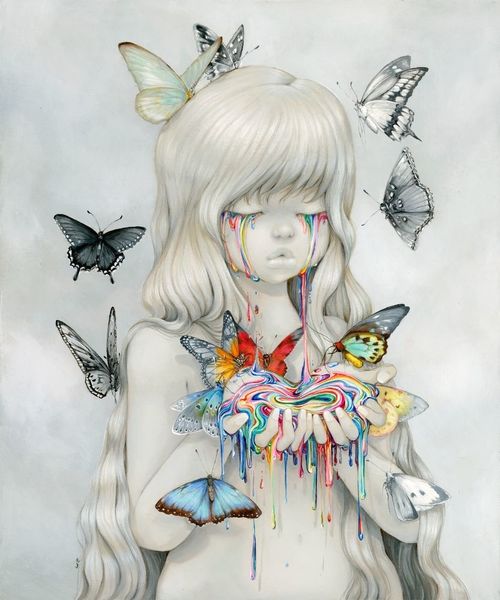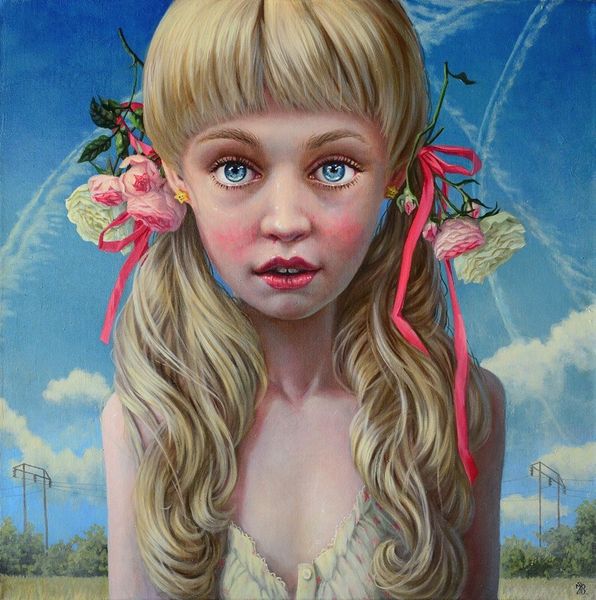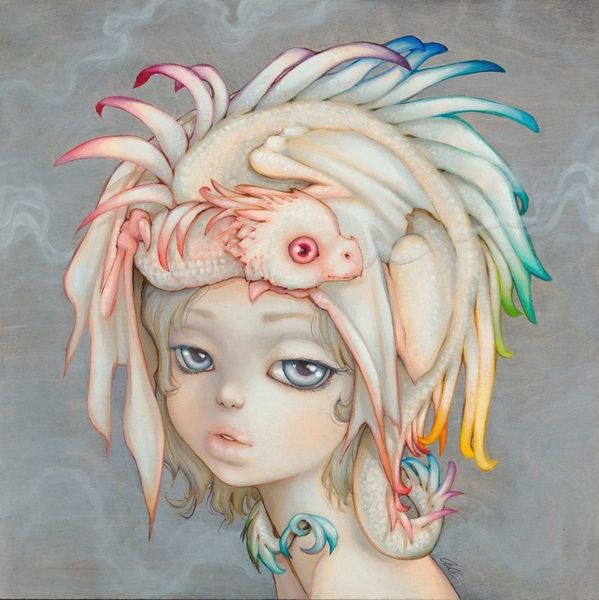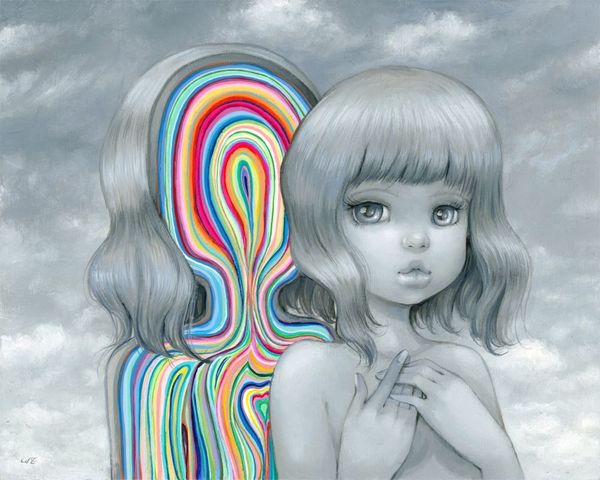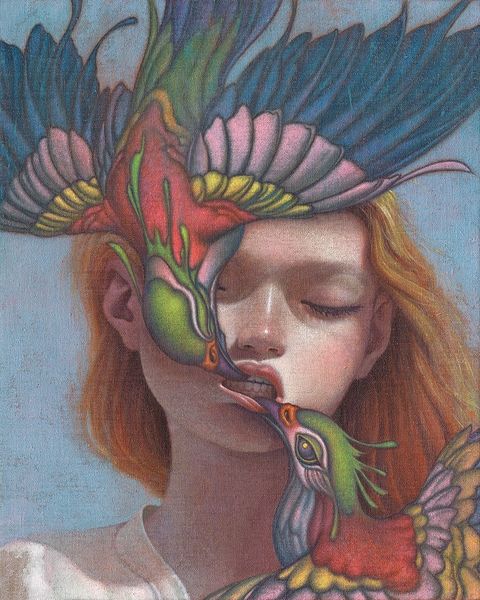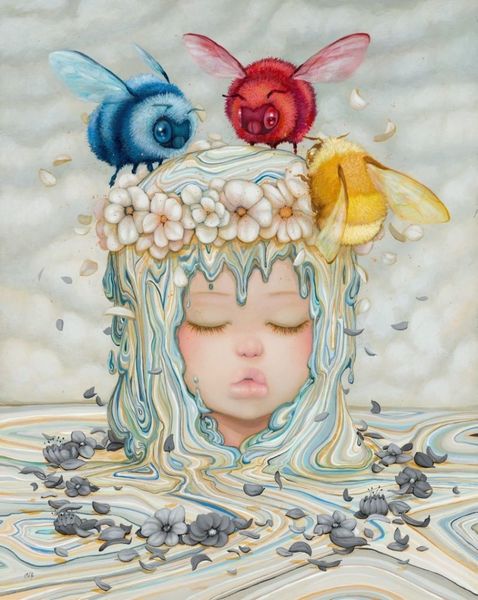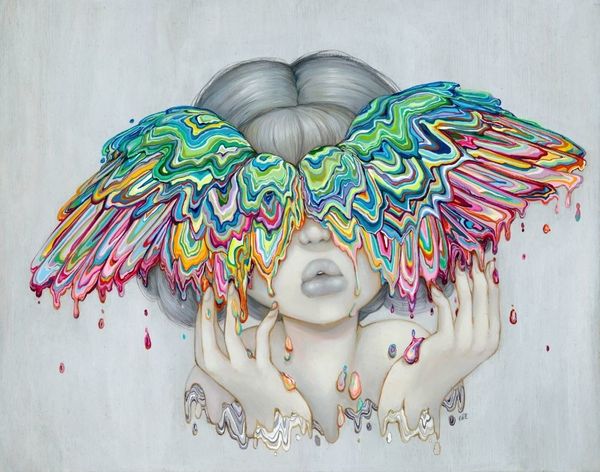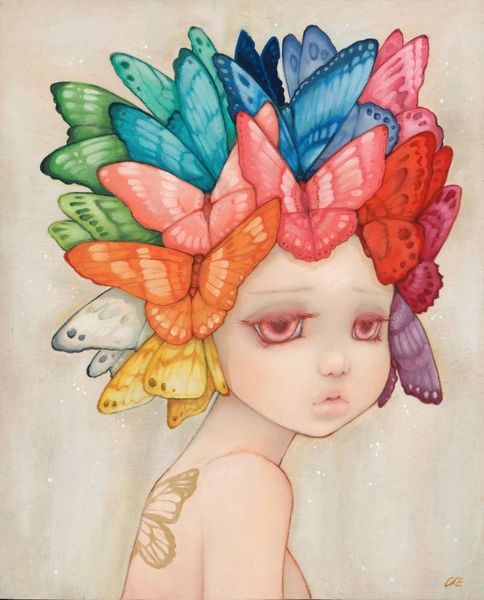
acrylic-paint
#
portrait
#
pop-surrealism
#
caricature
#
acrylic-paint
#
surrealism
#
portrait art
#
realism
Copyright: Modern Artists: Artvee
Curator: I find myself utterly captivated by this image; the oversized features give off a childish quality but are balanced with an unsettling, knowing gaze. Editor: This is "Mothra," a 2016 acrylic-on-wood piece by Camilla d'Errico. D'Errico is known for her blend of pop surrealism and manga influences. I find it really interesting that d'Errico chose "Mothra" as the title, alluding to the mythical giant moth and protector of Earth. What connections do you draw from this reference? Curator: The immediate and most obvious symbol is the butterfly, though calling it Mothra invites darker, almost predatory symbolism. Butterflies generally signify metamorphosis, transformation. The way it obscures the figure's eyes…is it concealing or revealing? Are those actual eyes within the wings, hinting at hidden sight, almost supernatural awareness? Editor: I see a figure caught in an intersectional bind—the hyper-feminine rendered powerless by innocence. The delicate colour palette, the gentle hands framing her face, the way her hair and ribbon resemble the soft colour of old porcelain dolls. The work sits at an uneasy juncture where female adolescence and sexuality collide. And in this light, the title gains darker significance, aligning her with an entity that, while often benevolent, is ultimately monstrous. Curator: It certainly complicates a reading focused solely on ‘pretty meets dark.’ This creature’s passivity isn’t necessarily submissive. Mothra is a protector, and that kind of strength cloaked in seeming vulnerability has historically been a complex attribute of femininity across different cultures. Do you see some commentary there? Editor: Absolutely. It subverts that traditional narrative. By imbuing her subject with Mothra's duality—power and potential danger lurking beneath a surface of docile beauty—d'Errico offers a nuanced take on girlhood, refusing easy categorizations. The portrait compels us to engage with the discomfiting power of seeing without being seen. Curator: This piece highlights how layered imagery allows artists to play with expectation. A familiar figure becomes almost otherworldly through carefully considered symbols. It's like a waking dream, pulling at something buried deep in the collective consciousness. Editor: For me, "Mothra" prompts reflections on what is seen and unseen, and what the history of power allows women to display—it reveals and conceals itself across time and cultures.
Comments
No comments
Be the first to comment and join the conversation on the ultimate creative platform.
